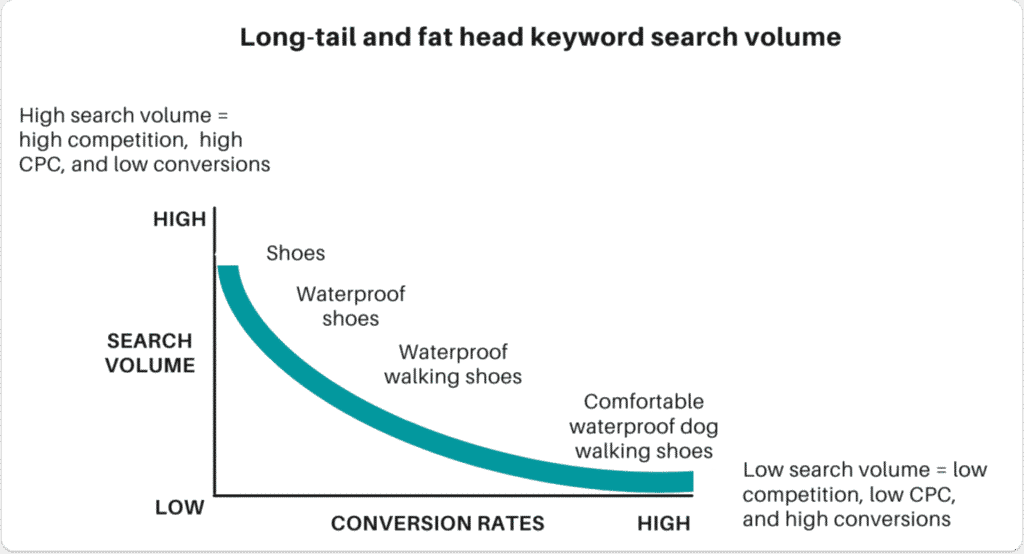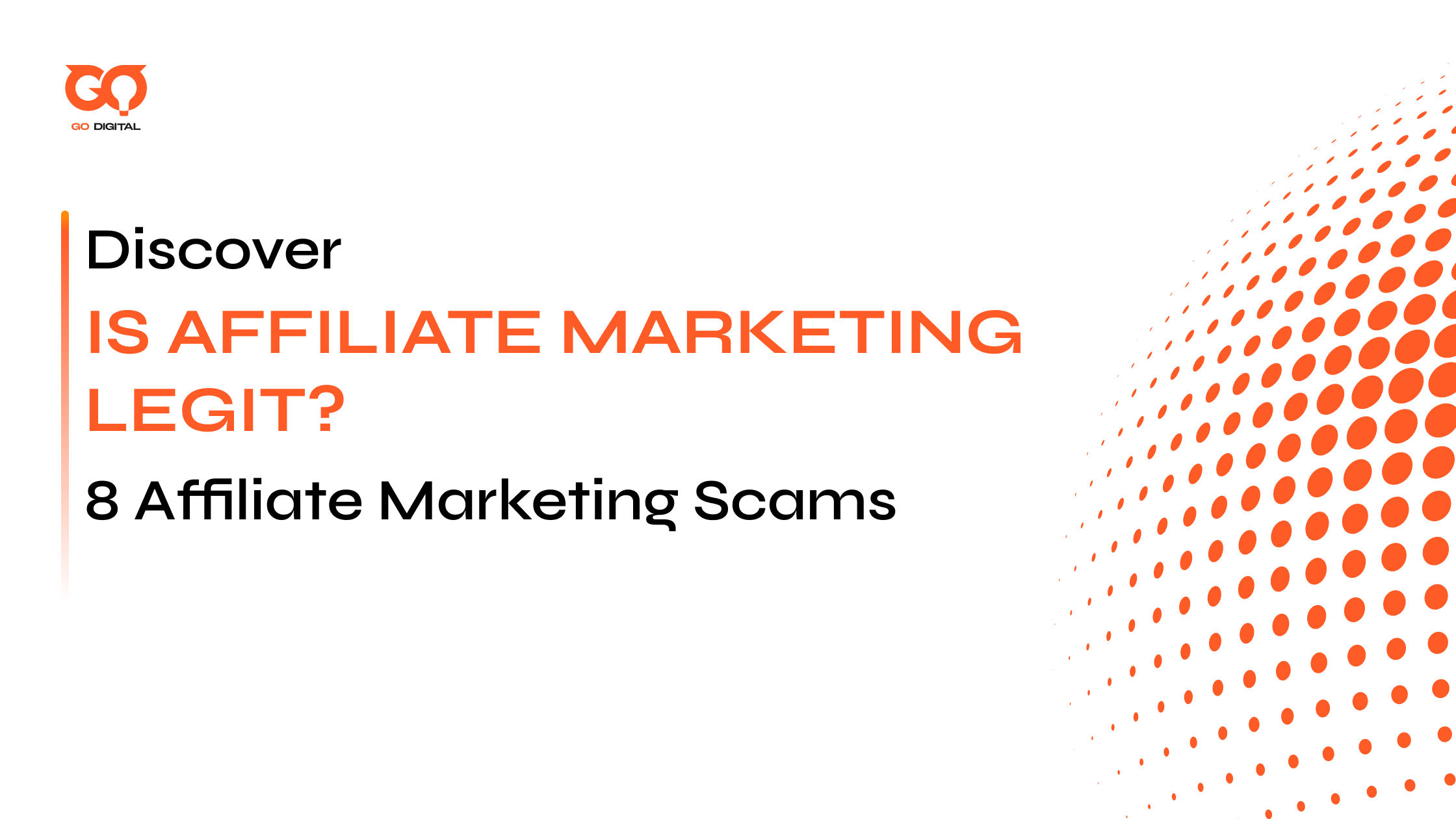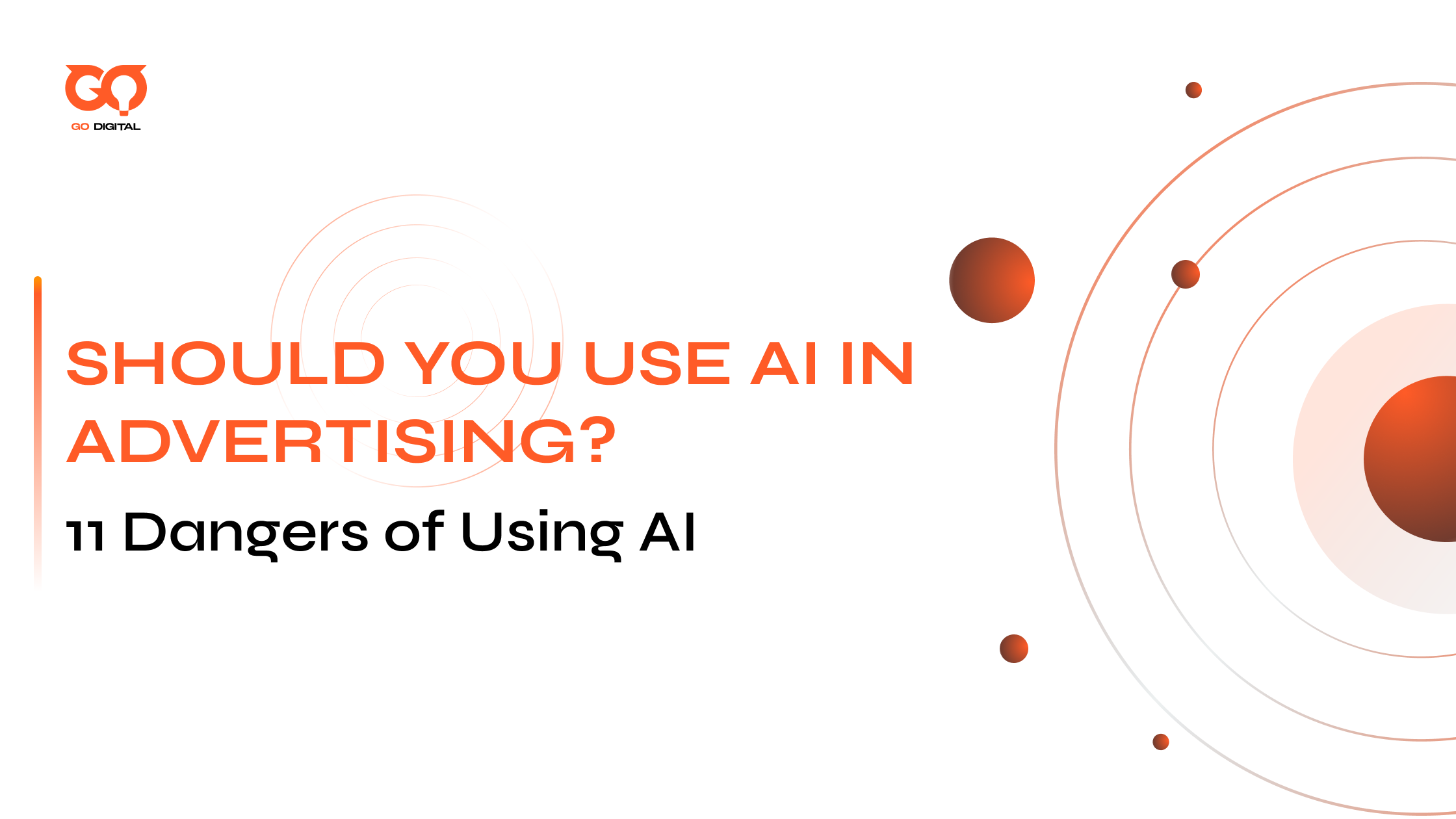Are you a SaaS company struggling to get noticed in the crowded digital marketplace? An effective SEO strategy tailored for SaaS can be your game-changer. Unlike traditional SEO, SaaS SEO aligns with long sales cycles and recurring revenue models.
In this article, we’ll be focusing on creating and optimizing an SEO strategy for SaaS. Learn essential metrics, discover Google ranking signals, and get actionable tips from GO Digital to propel your SaaS business to new heights in 2024.
Let’s get started!
A Broad Overview on SEO Strategy For SaaS
An SEO strategy for SaaS involves a series of techniques aimed at improving your software company’s visibility on search engines. This strategy includes: keyword research, on-page SEO, technical SEO, and content marketing, all tailored to meet the specific needs of SaaS businesses.
Unlike generic SEO (in which the main focus is on web’s visibility and SERP ranking), SEO strategy for SaaS is specialized and considers the distinct aspects of SaaS businesses, such as longer sales cycles, subscription-based models, and the need for customer retention.
An SEO strategy is a long-term investment. Typically, you can expect to see significant results in 6 to 12 months. Here’s a rough timeline:
- Month 1-2: Initial audit, keyword research, and strategy development.
- Month 3-4: On-page and technical optimizations, initial content creation.
- Month 5-6: Content marketing ramp-up, link-building efforts begin.
- Month 7-12: Continuous optimization, regular content updates, and backlink acquisition.
Budget varies depending on the scale of your efforts and resources available. For small to medium SaaS businesses, investing $1,000 to $5,000 per month is common.
To build a sustainable SaaS SEO strategy, it’s essential to start with a comprehensive marketing plan. Explore our Ultimate B2B SaaS Marketing Plan Template for actionable frameworks to align your SEO, content, and business objectives from the outset.
Building a SaaS SEO Plan Through the Marketing Funnels
Getting your SaaS SEO strategy right means understanding how to guide potential customers through different stages of their journey. In this guide, we’ll go through the steps to build SaaS SEO plan by aligning your marketing efforts with the marketing funnel—TOFU, MOFU, BOFU—with the aim to effectively attract, engage, and convert potential customers.
TOFU (Top of Funnel) – Awareness and Discovery
Step 1. Start with a comprehensive audit
Start by evaluating your current SEO performance. Use tools like Ahrefs, SEMrush, or Moz to conduct a site audit.
Identify high-impact issues that need immediate attention, such as technical SEO errors, underperforming content, and backlink gaps. Prioritize fixing these issues to see faster results.
🎯For reference, when our team at GO Digital conducted an audit for over 400+ articles that were published in the last 4-5 years, we had to structure the necessary scope of work into a workflow and put it into a tracking sheet to keep things on track (with other tracking tools to keep every stakeholder updated on the process).

The entire plan is quite a handful, so here are some of the key elements we highly encourage to include in your audit plan:
- Content (Did the content fully cover the topic? Was there any content that needed to be updated? Is it jam packed with AI content?…)
- On-page SEO (Are the heading levels accurately placed? Is the keyword density good or too much? Do the images have alt text and titles with keywords in them?…)
- Link Building (Are internal links strategically placed in the article? How many links have been placed?…)
- Technical SEO (Any broken links or orphan pages? Are the articles indexed?)
- Site Issues (Is the page load speed optimal? Is the website mobile-friendly? How about web security?…)
Effective SEO for SaaS doesn’t stop at the middle of the funnel. To enhance visibility and lead generation through advanced SEO tactics, like specialized technical optimizations and customer retention strategies, dive deeper into our insights on B2B SaaS SEO for more actionable tips
Step 2. Conduct Keyword Research
Identify keywords that are relevant to your SaaS product and target audience. This means understanding the specific problems your software solves and the terms your potential customers use to search for these solutions, and there are typically two types of keywords that can drive the best results: fat-head and long-tail keywords.

Fat-Head Keywords: Fat-head keywords are short, broad search terms that often represent high search volume and broad intent. Think of terms like “CRM software” or “project management tool.” These terms attract a large pool of searchers, many of whom are likely in the early stages of research and may not be ready to convert.
If you’re an established SaaS company looking to enhance brand recognition, targeting fat-head keywords can work to your advantage. These keywords are great for top-of-funnel content, like thought leadership articles, industry guides, or awareness-raising blog posts. You can also use them to build content clusters, where the fat-head keyword is supported by a series of long-tail keyword-focused articles.
Long-Tail Keywords: On the flip side, long-tail keywords are much more specific, usually involving three or more words, such as “best CRM software for small businesses” or “cloud-based project management tool for marketing teams.”
These keywords may have lower search volumes, but they’re highly targeted and attract users with clear transactional intent, often further along in their buying journey. SaaS businesses should focus on these keywords for landing pages, product pages, case studies, and solution-focused content that answers highly specific questions.
Balancing search volume and competition is crucial for building an effective keyword list. Aim for a mix of high-volume keywords that attract significant traffic and long-tail keywords that may have lower search volumes but higher purchase intent and lower competition.
Use tools like Google Keyword Planner, Ahrefs, Ubersuggest, Semrush, etc., to evaluate metrics like click-through rates (CTR), bounce rates, and conversions to see which types of keywords are bringing in the most qualified traffic.

MOFU (Middle of Funnel) – Consideration and Evaluation
Step 3. Define OKRs and KPIs for SaaS SEO
Setting clear Objectives and Key Results (OKRs) and Key Performance Indicators (KPIs) is essential for an effective SaaS SEO strategy. Start by establishing SMART objectives that align with your business goals, such as increasing organic traffic, improving keyword rankings, enhancing user engagement, and boosting conversions. For each objective, define specific Key Results:
- Increasing 50,000 organic visitors per month by year-end;
- Improving 10 high-intent keywords to Top 3 in 3 months;
- Enhancing user engagement by keeping bounce rate below 40% in 6 months;
- Boosting 15% increase in conversion rate.
Track these results with KPIs like total organic sessions, keyword positions, bounce rates, and conversion rates. To control and track your OKRs, try tools such as Jira’s OKR Board or Monday.com!
Step 4. Create High-Quality Content
Develop a content strategy that addresses the needs and pain points of your target audience.
a) Identify Your Target Audience and Their Pain Points
Understanding your audience is the first step in creating relevant content. Conduct thorough research to define your buyer personas, including their demographics, job roles, challenges, and goals. Use surveys, interviews, and analytics tools to gather insights. Key questions to answer include:
- What problems are they trying to solve?
- What information do they seek during their buyer’s journey?
- What are their decision-making criteria?
b) Map Content to the Buyer’s Journey
Create content that aligns with each stage of the buyer’s journey: awareness, consideration, and decision. This ensures that you provide value to potential customers regardless of where they are in their decision-making process.
- Awareness Stage (Informational intent): Focus on educational content that helps your audience understand their problems. Examples include blog posts, infographics, and explainer videos. Topics might cover industry trends, common challenges, or introductory guides related to your software.
- Consideration Stage (Commercial intent): Provide in-depth information that helps potential customers evaluate their options. This includes case studies, whitepapers, comparison guides, and webinars. Content should highlight how your SaaS solution addresses specific pain points.
- Decision Stage (Transactional intent): Create content that convinces prospects to choose your product. This includes testimonials, product demos, free trials, and pricing information. Address common objections and emphasize your unique selling points.
c) Keyword Research and SEO Integration
Integrate keyword research into your content strategy to ensure your content is discoverable by search engines. Focus on:
- Primary Keywords: High-volume keywords that are directly related to your SaaS product.
- Long-Tail Keywords: More specific phrases that potential customers might use when searching for solutions.
- Semantic Keywords: Related terms and phrases that add context to your primary keywords.
d) Content Types and Formats
Diversify the types of content you create to cater to different preferences and consumption habits. Consider the following formats:
- Blog Posts: Regularly updated content that addresses various topics relevant to your audience.
- E-books and Whitepapers: In-depth resources that offer valuable insights and detailed information.
- Videos and Webinars: Engaging formats that can explain complex topics visually.
- Case Studies and Testimonials: Real-life examples that demonstrate the effectiveness of your product.
- Infographics: Visual content that simplifies and presents data and information in an easy-to-digest format.
e) Consistent Content Calendar
Develop a content calendar based on 30-60-90 to ensure consistency and regularity in your content production. Plan out your content topics, formats, and publishing dates in advance. This helps in maintaining a steady flow of content and ensures that all stages of the buyer’s journey are addressed.
f) Measure and Adjust
Regularly analyze the performance of your content to see what resonates with your audience. Use tools like Google Analytics, HubSpot, or SEMrush to track metrics such as:
- Traffic and engagement (page views, time on page, bounce rate)
- Conversion rates (sign-ups, demo requests, downloads)
- SEO performance (keyword rankings, organic search traffic)
Step 5. Optimize On-Page SEO
Ensure all on-page elements are optimized, including:
- Title tags,
- Meta descriptions,
- Headers,
- Content.
Use target keywords naturally within your content and ensure each page has a clear, focused topic. Improving your website’s load speed, mobile-friendliness, and user experience will also help meet Google’s ranking criteria (we’ll go through this later in the article).
Step 6. Build a Strong Backlink Profile
Acquire high-quality backlinks from reputable sites in your industry. Use strategies like guest posting, creating linkable assets (e.g., infographics, comprehensive guides), and building partnerships with other SaaS companies. A strong backlink profile is crucial for improving your domain authority and search rankings.
Step 7. Update and Repurpose Content
SEO is an ongoing process. And a long one that is.
Regularly update your existing content to ensure it remains relevant and optimized for search engines. Repurpose high-performing content into different formats, such as turning blog posts into videos or infographics, to reach a broader audience and improve engagement.
BOFU (Bottom of Funnel) – Conversion and Decision
Step 8. Monitor and Analyze Performance
Regularly track your SEO performance, monitor your KPIs, and do a retro or two to adjust your strategy based on the insights you gather. Look for patterns in traffic, keyword rankings, and user engagement to continually refine your approach.
Step 9. Optimize for Conversion
Ensure that your SEO efforts lead to conversions. A focus on conversion optimization will help you turn organic traffic into paying customers.
Optimize your landing pages with clear calls-to-action (CTAs), use testimonials and case studies to build trust, and make it easy for visitors to sign up for a trial or a quick consult. (See what we did there?)
How Is SEO Strategy For SaaS Different From Traditional SEO?
While traditional SEO focuses on improving a website’s visibility and rankings across various industries, an SEO strategy for SaaS is uniquely tailored to the software-as-a-service model.
Here are the key differences:
Longer Sales Cycles
Traditional SEO often aims for quick wins and immediate conversions.
In contrast, SaaS SEO must account for the longer sales cycles typical of software products. This means creating content that nurtures potential customers over time, from initial awareness to decision-making stages.
Subscription-Based Models
Unlike one-time purchases common in traditional SEO for other industries, SaaS companies rely on recurring revenue. This necessitates a focus on customer retention and lifetime value.
SEO efforts must therefore include strategies for retaining existing customers, such as creating ongoing educational content and resources.
Technical Complexity
SaaS products often involve much more complex technical details that require specialized content. SEO strategy for SaaS includes creating detailed guides, tutorials, and case studies that address the specific needs and pain points of potential users, helping them understand and effectively use the software.
Competitive Landscape
The SaaS market is highly competitive, with many companies vying for the same keywords and audience segments. This requires a more aggressive and nuanced approach to keyword targeting and content differentiation to stand out from competitors.
Product Updates
SaaS products frequently update and add new features. SaaS SEO must be adaptable and include regular content updates to reflect the latest product offerings and capabilities, ensuring that potential customers always have access to the most current information.
| Aspect | Traditional SEO | SEO Strategy for SaaS |
| Sales Cycle | Shorter, focused on quick conversions | Longer, nurturing potential customers over time |
| Revenue Model | Often one-time purchases | Subscription-based, focus on recurring revenue and customer retention |
| Content Focus | General product/service information | Detailed guides, tutorials, and case studies addressing specific user needs |
| Technical Complexity | Typically lower, less specialized content | Higher, requires specialized and technical content |
| Competitive Landscape | Varies by industry, generally less intense | Highly competitive, requires aggressive keyword targeting and content differentiation |
| Product Updates | Less frequent, content remains relevant longer | Frequent updates, content must be regularly updated to reflect new features and capabilities |
Important Metrics To Track In SaaS SEO Strategy
To measure the effectiveness of your SEO strategy and ensure it drives organic growth, track specific metrics that provide insights into both your SEO performance and the unique aspects of your SaaS business.
These metrics can be broadly categorized into SEO-specific metrics and SaaS-specific metrics:
| Category | Metric | What to Track |
| SEO-Specific | Organic Traffic | Total number of visitors from organic search |
| Keyword Rankings | Positions of target keywords in SERPs | |
| Bounce Rate | Percentage of visitors who leave after viewing one page | |
| Backlinks | Number and quality of external links | |
| Click-Through Rate (CTR) | Percentage of people clicking on your link in search results | |
| SaaS-Specific | Monthly Recurring Revenue (MRR) | Total revenue from subscriptions each month |
| Customer Acquisition Cost (CAC) | Cost of acquiring a new customer through organic search | |
| Customer Lifetime Value (CLV) | Total revenue expected from a customer over their lifetime | |
| Churn Rate | Percentage of customers canceling subscriptions | |
| Lead-to-Customer Conversion Rate | Percentage of leads converting to paying customers |
Google Ranking Signals That Matters For SaaS SEO In 2024
1. Helpful Content
Creating helpful content is paramount for improving your search rankings. Google’s Helpful Content Guidelines emphasize the importance of crafting content that is valuable, relevant, and answers users’ queries comprehensively.
To align with these guidelines and stay competitive:
- Focus on User Intent: Understand what your audience is searching for and create content that directly addresses their needs and questions.
- Depth and Quality: Ensure your content is thorough and well-researched, providing in-depth insights that go beyond surface-level information.
- Originality: Produce unique content that offers a fresh perspective or new information, rather than simply rehashing what’s already available.
For more details, refer to the Google Helpful Content guideline.
💡Quick QnA: Is Google against publishing AI Content?
Google acknowledges and allows the appropriate use of AI in creating helpful content. They’re only against AI content that is specifically mass produced and manipulates ranking, which they can consider as spamming.
2. On-Page Experience
The user experience on your webpage significantly impacts your search rankings. Google’s ranking factors include several aspects of on-page experience, such as:
- Page Load Speed: Fast-loading pages enhance user satisfaction and reduce bounce rates. Use tools like Google PageSpeed Insights to optimize your site’s performance.
- Mobile-Friendliness: Ensure your site is fully optimized for mobile devices, providing a seamless experience across all screen sizes.
- Core Web Vitals: Focus on metrics like Largest Contentful Paint (LCP), First Input Delay (FID), and Cumulative Layout Shift (CLS) to improve user interaction and visual stability of your site.
You can explore more about these factors in Google’s ranking factors.
3. Link Building
Backlinks remain a critical component of Google’s ranking algorithm. Building a strong backlink profile helps improve your domain authority and search visibility. Key strategies include:
- Acquiring High-Quality Backlinks: Focus on obtaining links from reputable and relevant sites within your industry.
- Creating Link-Worthy Content: Develop valuable resources, such as in-depth guides, infographics, and original research, that others will want to link to.
- Internal Linking: Strategically place internal links within your content to distribute link equity across your site and improve navigation for users.
Actionable Tips To Improve SEO Strategy For SaaS
Tip #1. Optimize for Featured Snippets
Featured snippets are prime real estate on Google’s search results page. To optimize for them:
- Use tools like Ahrefs or SEMrush to find keywords where your site ranks in the top 10 and has a featured snippet opportunity.
- Format your content in a way that answers questions concisely. Use lists, tables, and clear headings.
- Ensure your content directly answers the query in a succinct and informative manner.
Tip #2. Focus on Content Refreshing
Ensure that all information is current and relevant. Add new insights, statistics, and data. Improve title tags, meta descriptions, and keyword usage based on updated keyword research.
Tip #3. Enhance User Experience (UX) and Web Development
Delight your users with a seamless experience. Speed up your site, perfect your mobile view, and create a clear path for visitors.
💡Looking for some industry case studies to note down their “secret sauce” of success? We highly recommend this analysis from Ahrefs! Check out the video below:
The Key Takeaways
An effective SEO strategy for SaaS in 2024 involves creating valuable, user-centric content, optimizing on-page experience, and building a robust backlink profile. Regularly update and monitor key performance metrics to drive organic growth and ensure sustained success.
We hope this article has been a great help for you! Stay tuned for more insights and industry knowledge on GO Digital’s Blog.







